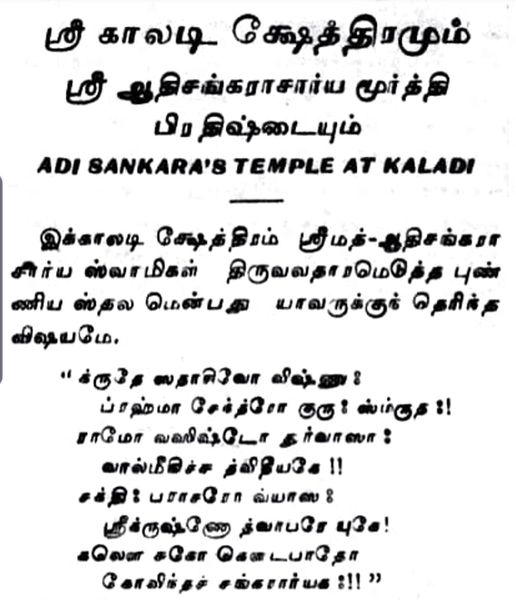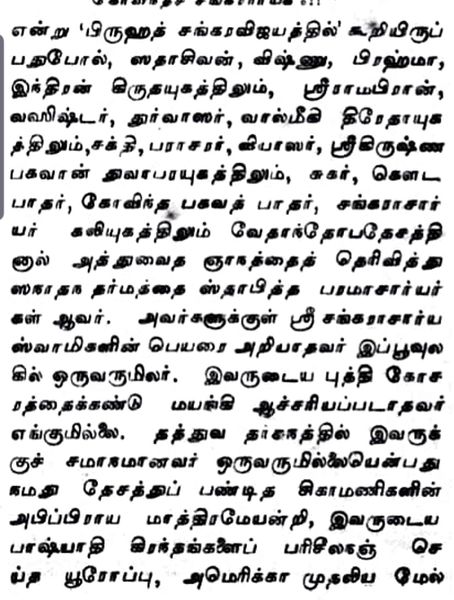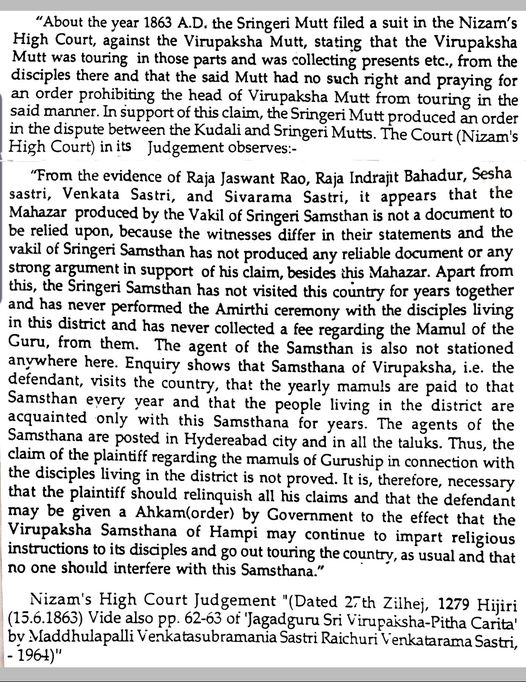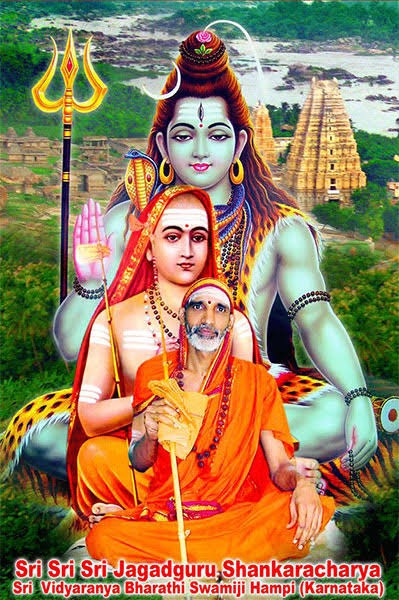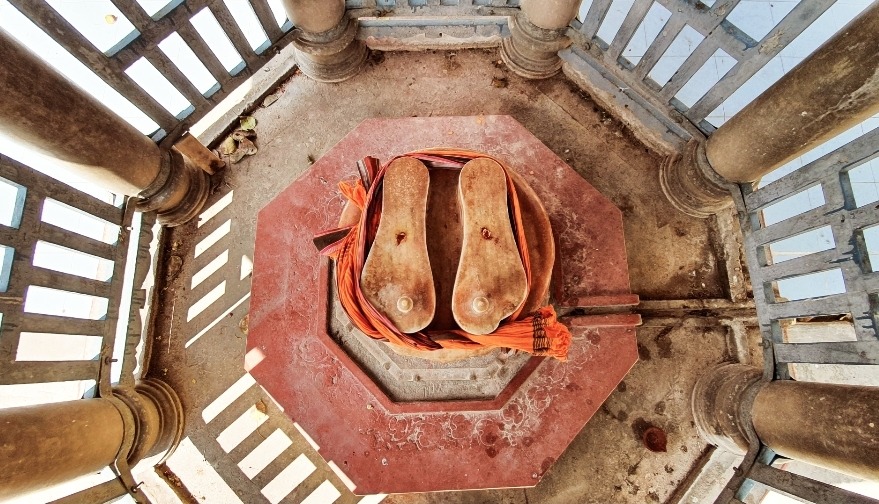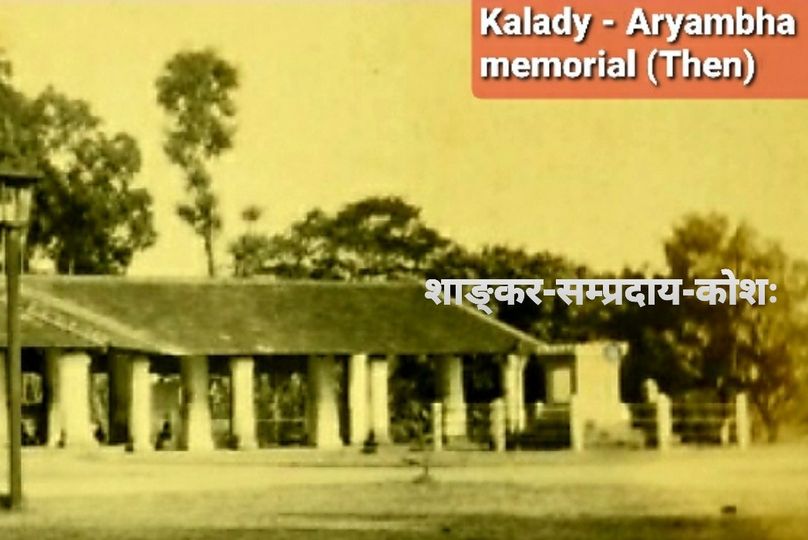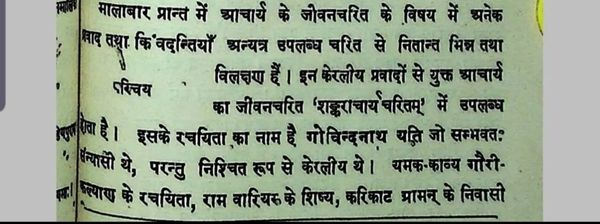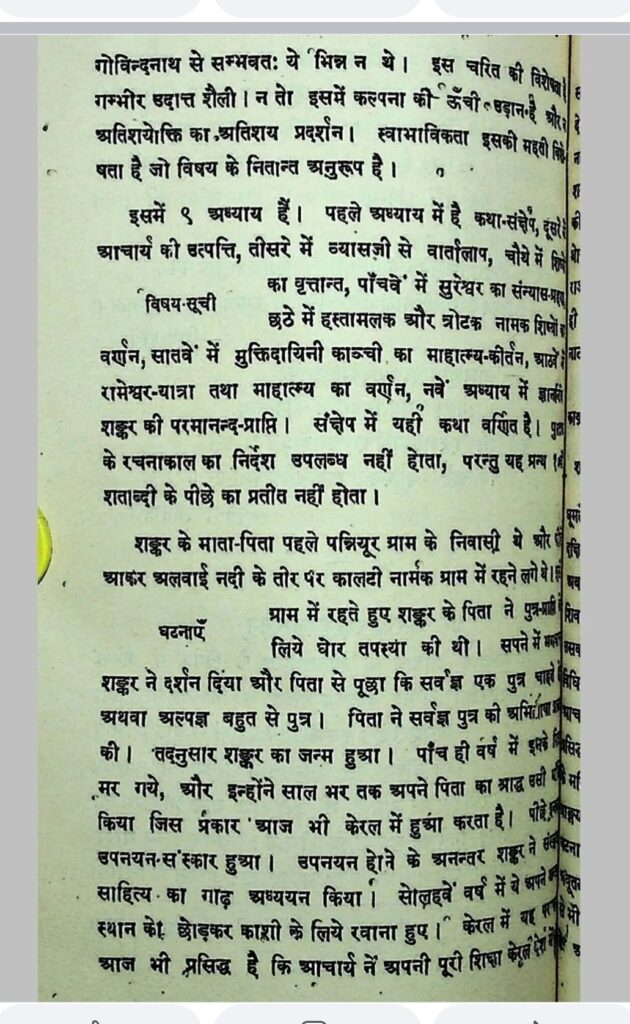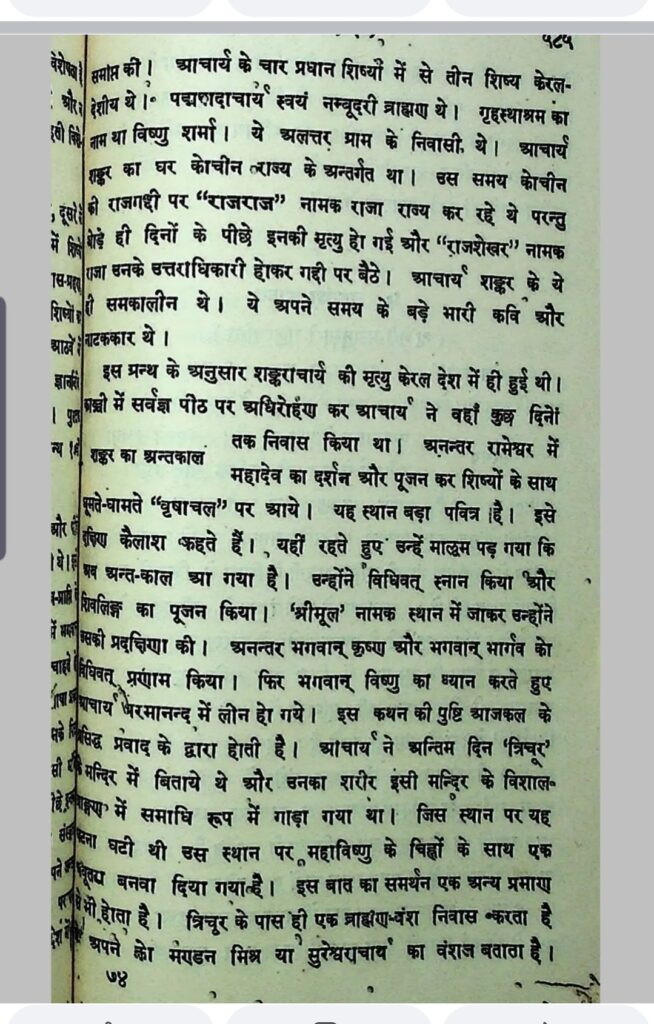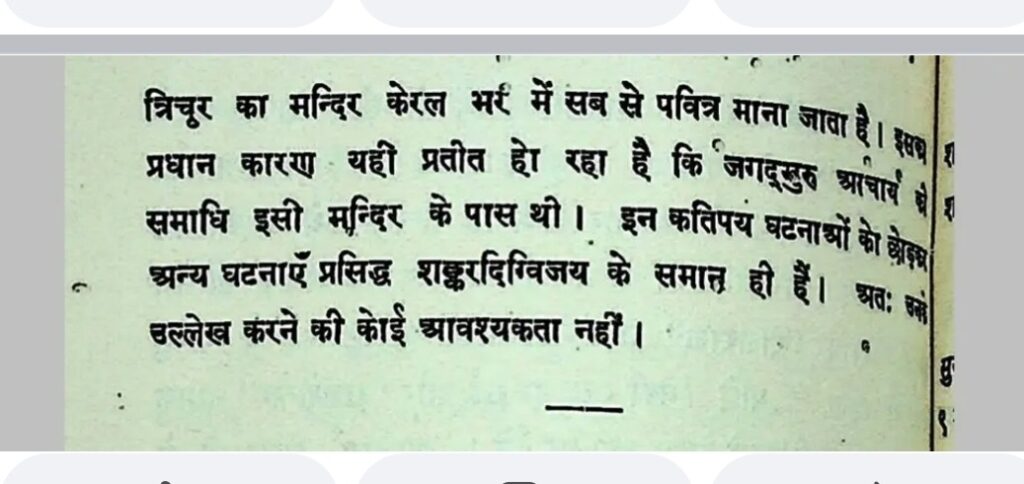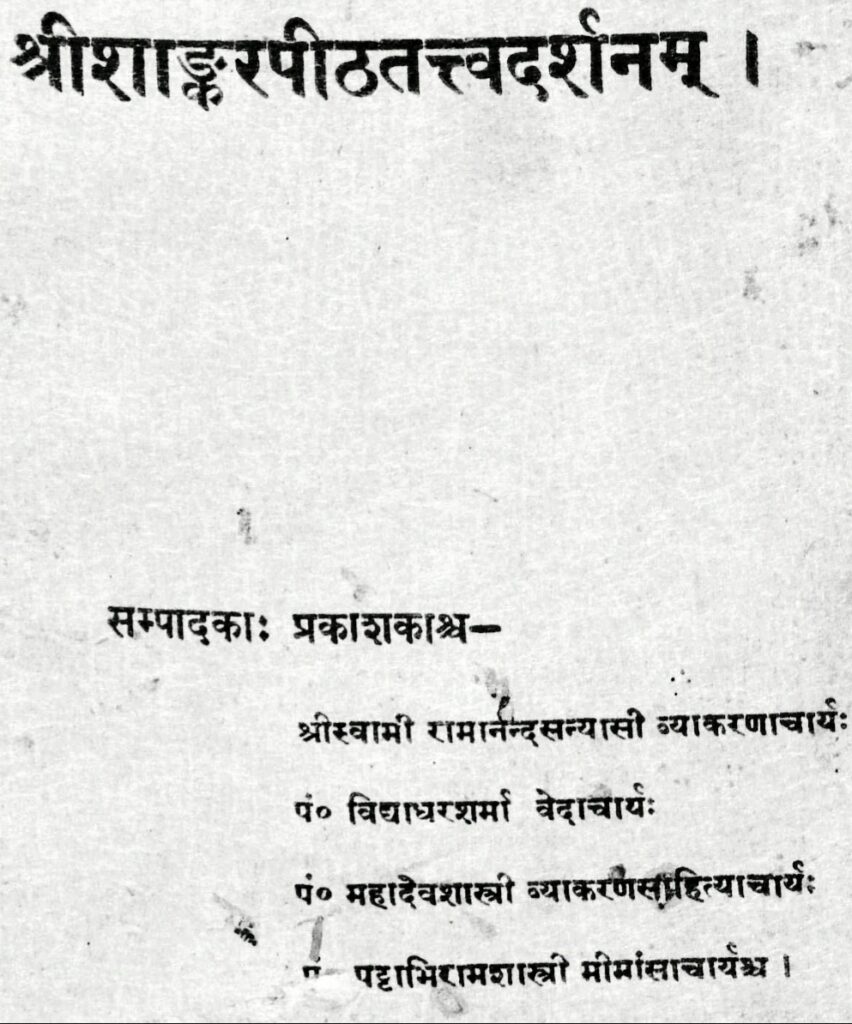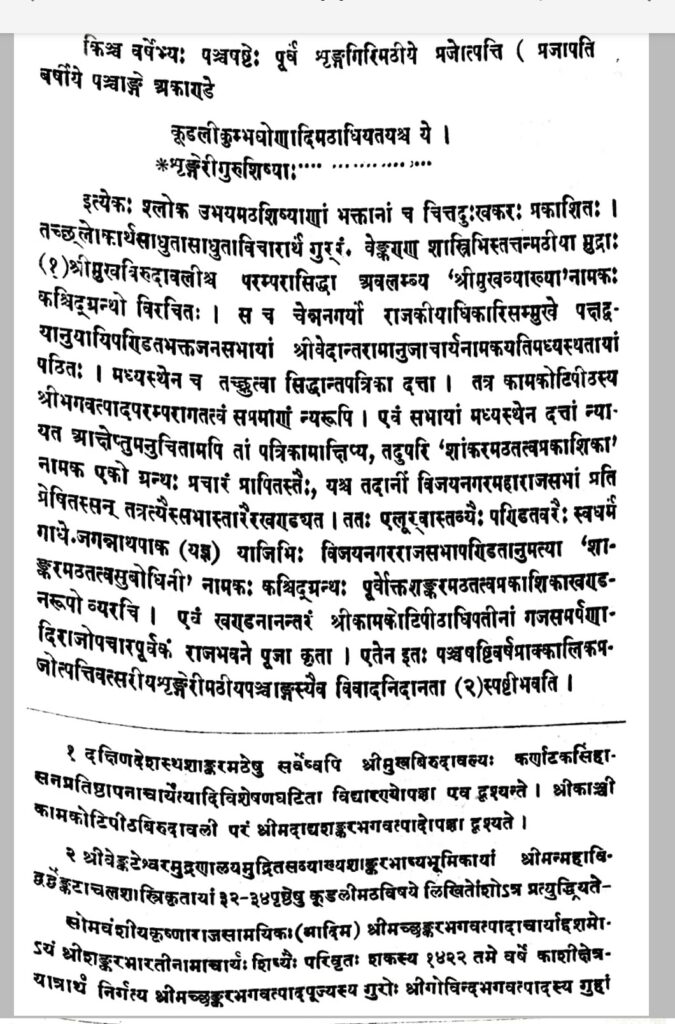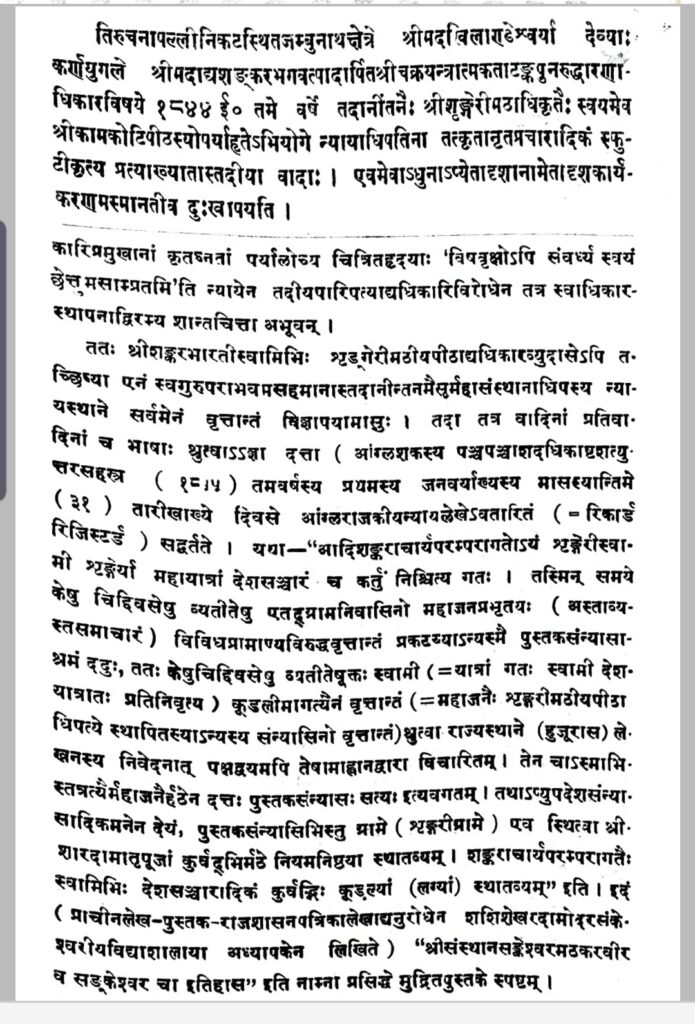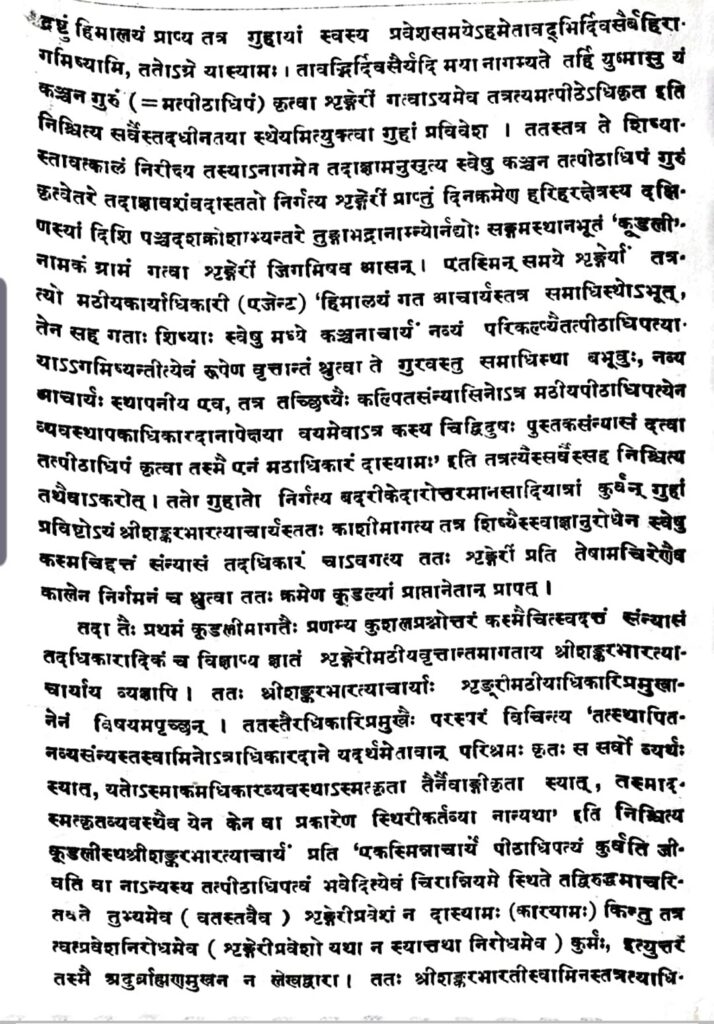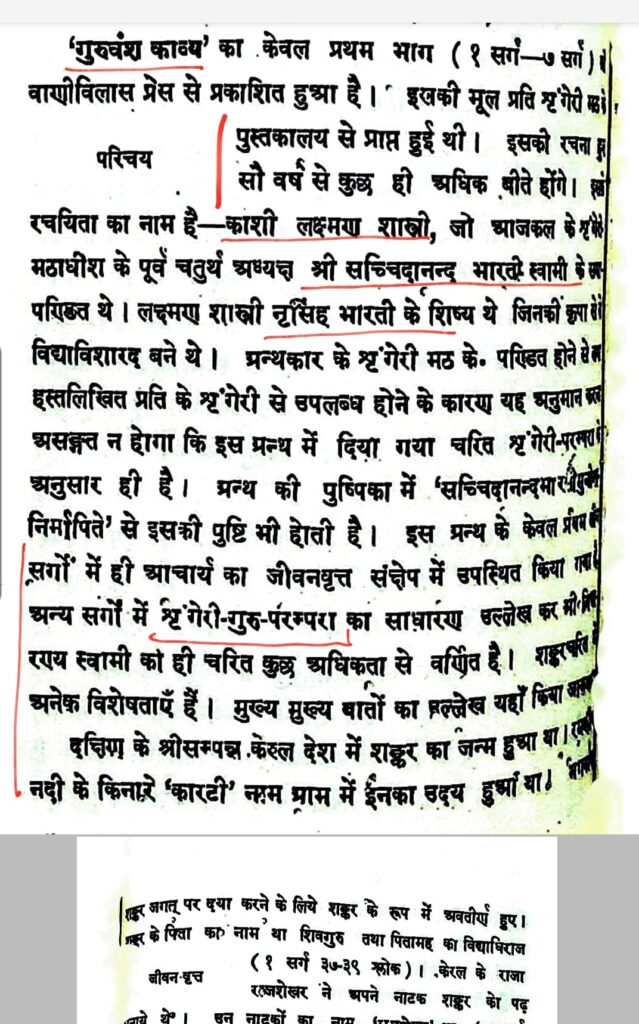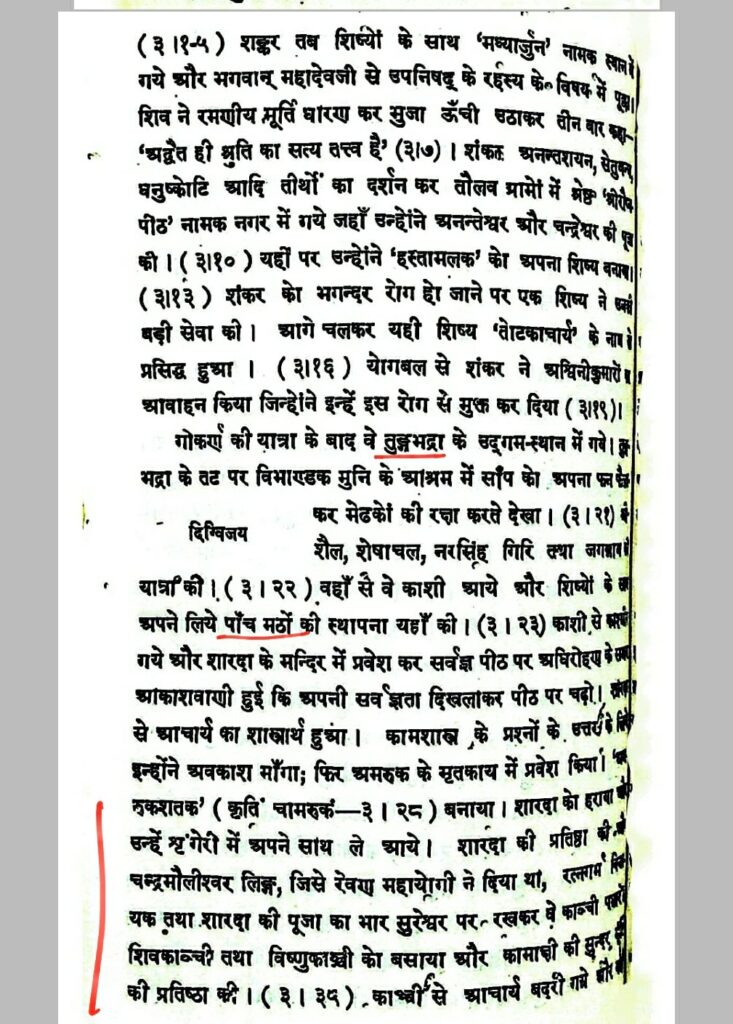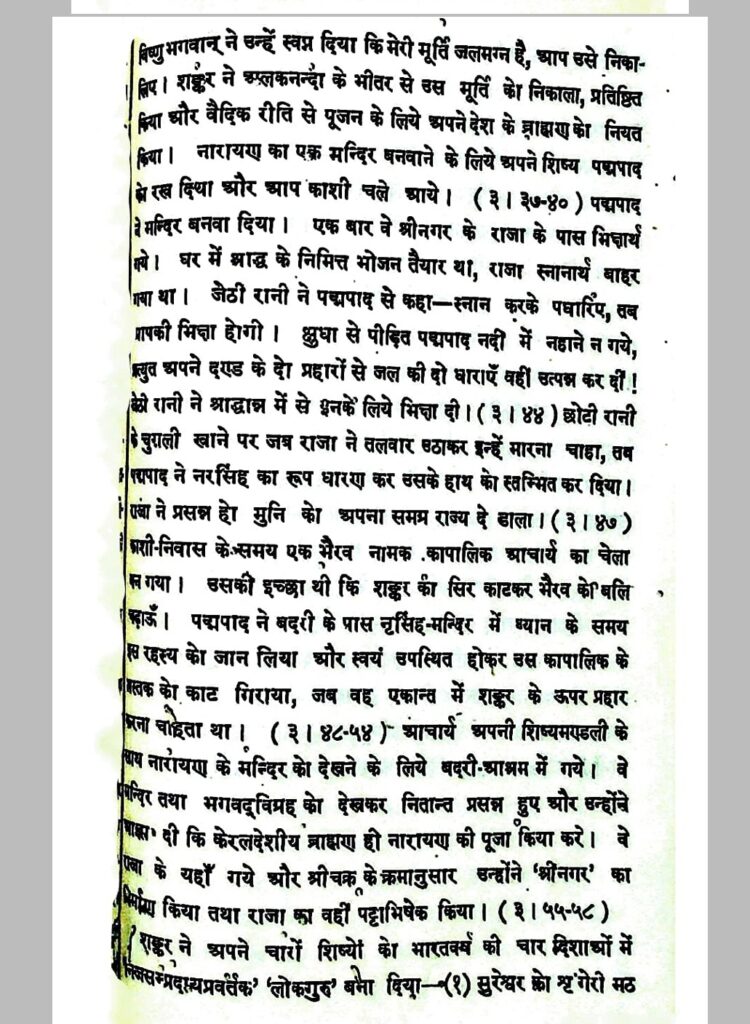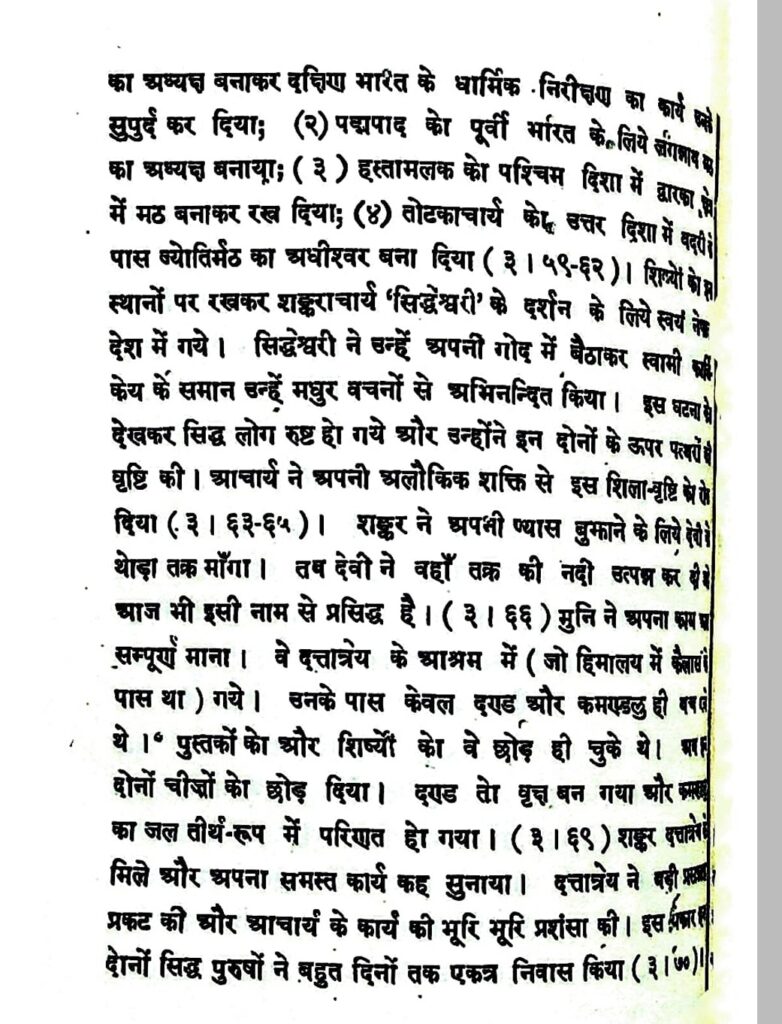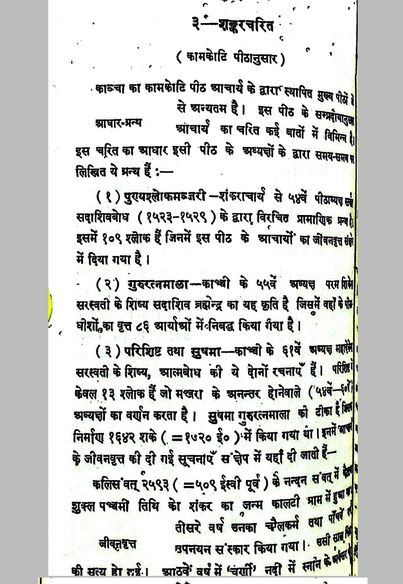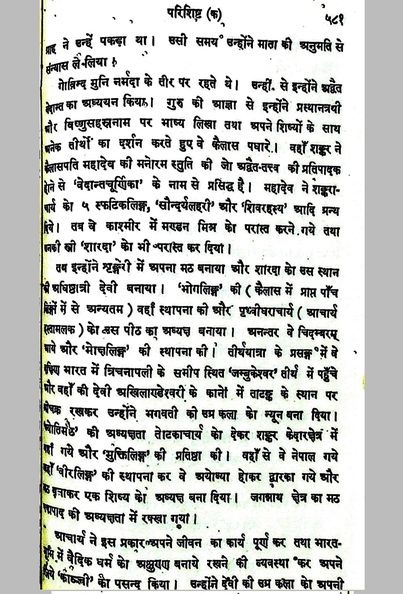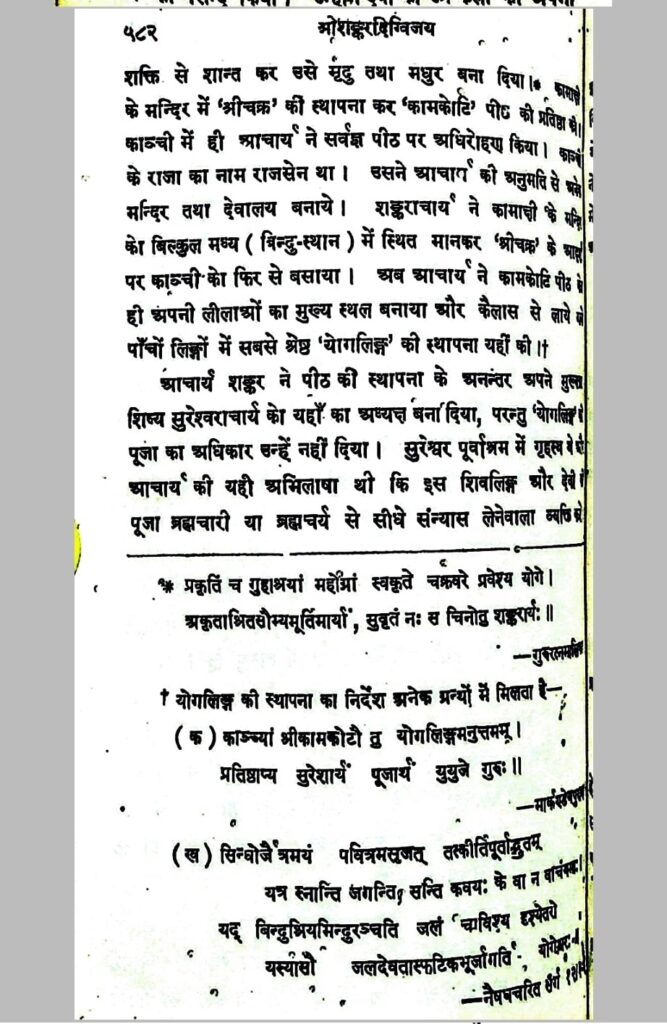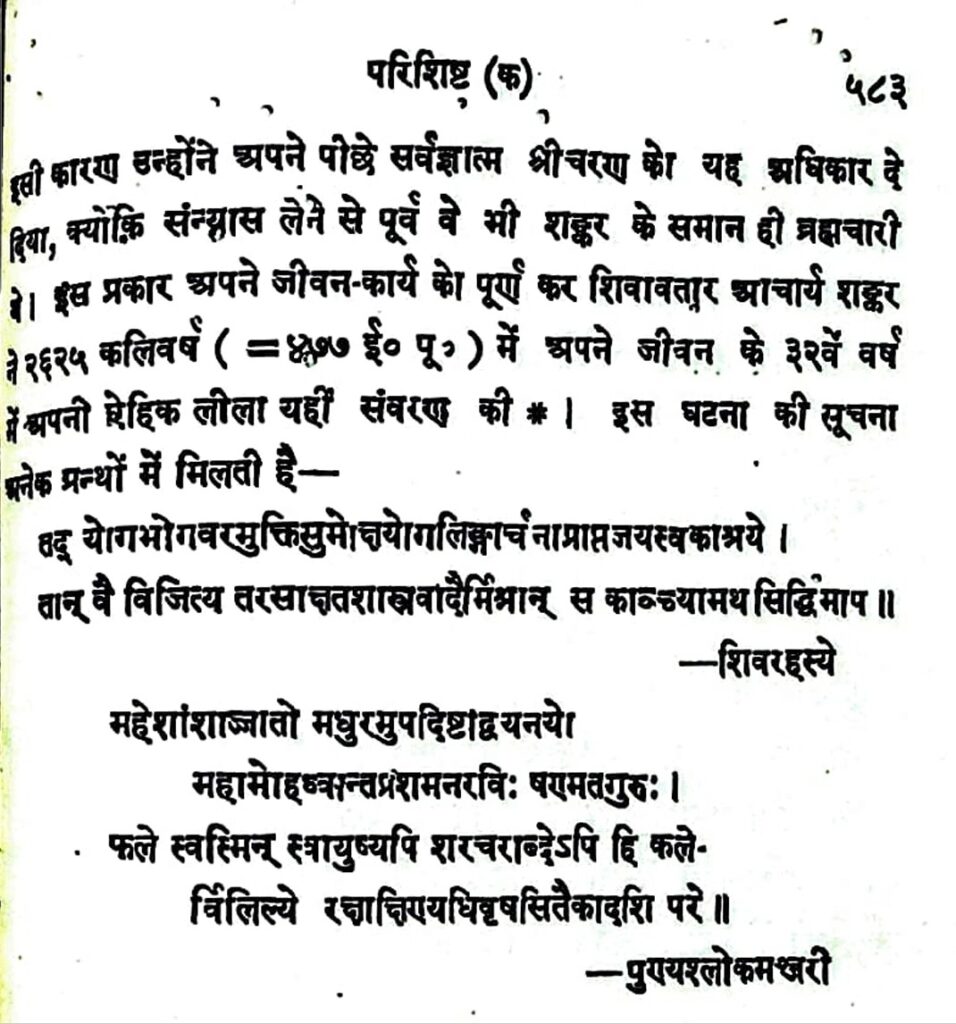ஸ்ரீஆதிசங்கர பகவத்பாதர் அவதரித்த காலடித் தலம் பற்றி முதன்முதலாக எவரால் உலகறிய பிரசாரம் செய்யப்பட்டது?
யார் அங்கு முதன்முதலாக சிறு கோயில் ஒன்றை எழுப்பினார்?
பிறகு எங்ஙனம் திருவிதாங்கூர் மன்னர் ஆதரவுடன், சிருங்கேரி மடத்தார் அங்கு மேற்படி ஸ்தலத்தில் ஏற்கனவே இருந்த கட்டுமானங்களை விஸ்தரித்தும், புதுப்பணிகளையும் செய்தனர்? என்பனவற்றைச் சுருக்கமாகவும், ஆதாரங்களுடனும் விளக்கும் 1910ஆம் ஆண்டுக் கட்டுரை ஒவ்வொரு பகுதியாக இங்கு வெளியிடப்படுகிறது. இவற்றின் ஆங்கில மொழியாக்கமும், மூலக்கட்டுரை முழுமையும் விரைவில் வெளியிடப்படும்.
அக்காலத்தில் மிகப் பிரபலமாக இருந்த தமிழ் மாத இதழில் உயர்நீதிமன்ற வழக்கறிஞர் T.S.நாராயண சாஸ்த்ரி அவர்கள் எழுதிய இக்கட்டுரை 2532ஆவது ஸ்ரீசங்கரஜயந்தி தினத்தில் வெளிவருவது பொருத்தமே.
காலடி க்ஷேத்திரமும் ஸ்ரீஆதிசங்கராசார்ய மூர்த்தி பிரதிஷ்டையும்
(ADI SANKARA’S TEMPLE AT KALADI)
இக்காலடி க்ஷேத்திரம் ஸ்ரீமத் ஆதிசங்கராசார்ய ஸ்வாமிகள் திருவவதாரமெடுத்த புண்ணிய ஸ்தலமென்பது யாவருக்குந் தெரிந்த விஷயமே.
“க்ருதே ஸதாசிவோ விஷ்ணு:
ப்ரஹ்மா சேந்த்ரோ குரு : ஸ்ம்ருத: Ii
ராமோ வஸிஷ்டோ துர்வாஸா :
வால்மீகிச்ச த்விதீயகே II
சக்தி: பராசரோ வ்யாஸ:
ஸ்ரீக்ருஷ்ணோ த்வாபரே யுகேI
கலௌ சகோ கௌடபாதோ
கோவிந்தச் சங்கரார்யக: II
என்று ‘பிருஹத் சங்கர விஜயத்தில்’ கூறியிருப்பதுபோல், ஸதாசிவன், விஷ்ணு, பிரஹ்மா, இந்திரன் கிருதயுகத்திலும், ஸ்ரீராமபிரான், வஸிஷ்டர், துர்வாஸர், வால்மீகி திரேதாயுகத்திலும், சக்தி, பராசரர், வியாஸர், ஸ்ரீகிருஷ்ண பகவான் துவாபரயுகத்திலும், சுகர், கௌடபாதர், கோவிந்த பகவத்பாதர், சங்கராசார்யர் கலியுகத்திலும் வேதாந்தோபதேசத்தினால் அத்துவைத ஞானத்தைத் தெரிவித்து ஸநாதந தர்மத்தை ஸ்தாபித்த பரமாசார்யர்கள் ஆவர்.
அவர்களுக்குள் ஸ்ரீசங்கராசார்ய ஸ்வாமிகளின் பெயரை அறியாதவர் இப்பூவுலகில் ஒருவருமிலர், இவருடைய புத்தி கோசரத்தைக் கண்டு மயங்கி ஆச்சரியப்படாதவர் எங்குமில்லை. தத்துவ தர்சனத்தில் இவருக்குச் சமாநமானவர் ஒருவருமில்லையென்பது நமது தேசத்துப் பண்டித சிகாமணிகளின் அபிப்பிராய மாத்திரமேயன்றி, இவருடைய பாஷ்யாதி கிரந்தங்களைப் பரிசீலனஞ் செய்த யூரோப்பு, அமெரிக்கா முதலிய மேல்
நாட்டுப் புலவர்களின் துணிபுமேயாம்.
